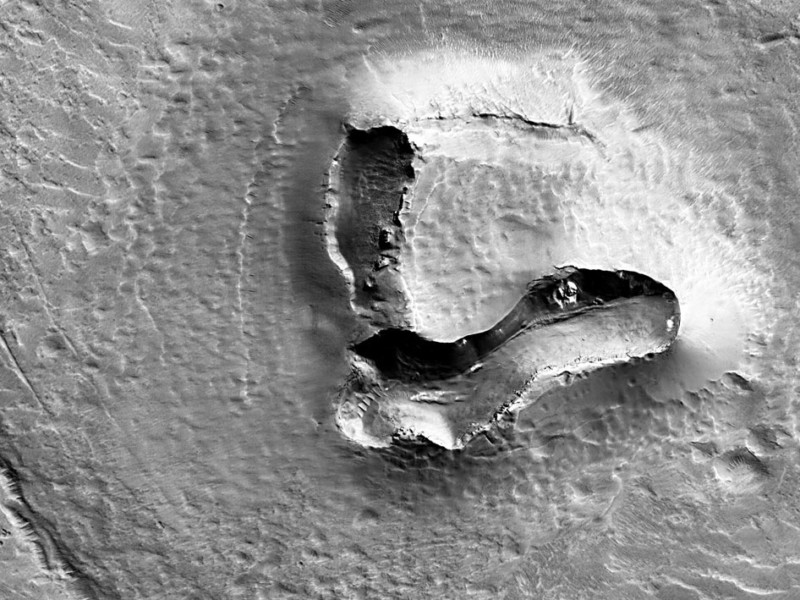NASA Satellite Captures a Photo of a ‘Bear’ on Mars
![]()
A NASA satellite has captured an unusual object staring out from the surface of Mars — a bear face.
The space agency’s Mar Reconnaissance Orbiter operated by the team at the University of Arizona’s Lunar and Planetary Laboratory released the image on Wednesday, January 25.

The High Resolution Imaging Science Experiment (HiRise) captured the image on December 12 with its official Twitter account asking: “A Bear on Mars?”
“This feature looks a bit like a bear’s face. What is it really?” The University of Arizona writes.
“There’s a hill with a V-shaped collapse structure (the nose), two craters (the eyes), and a circular fracture pattern (the head).
“The circular fracture pattern might be due to the settling of a deposit over a buried impact crater. Maybe the nose is a volcanic or mud vent and the deposit could be lava or mud flows?”
Before adding: “‘Maybe just grin and bear it.”
While the research team are not totally sure why a bear face is looking out from the surface of the Red Planet, the internet piled in with predictable puns.
“The fact that NASA is hiding the truth about life on Mars is unbearable,” writes Don Hammond.
Others Photoshopped the pictures onto the face of an actual bear from Earth.
The fact that NASA is hiding the truth about life on Mars is unbearable.
— Don Hammond (@bluestatedon) January 25, 2023
— Jay👽 (@Jay_fromspace) January 26, 2023
NASA’s HiRISE Camera
NASA’s HiRISE camera, attached to the Mars Reconnaissance Orbiter, weighs a huge 143-pounds (65 kilograms) and consists of a 19.7-inch (0.5 meters) aperture reflecting telescope.
It is a little over five feet (1.6 meters) long, the experiment is a powerful camera with a focal length of 40 feet (12 meters) located on the Nadir side of the spacecraft so that it can continuously look at the Red Planet.
It is equipped with 14 detectors, each covered with a filter in the red, near-infrared, or blue-green wavelength bands. Hi-RISE can acquire images containing as much as 28 gigabytes of data in as little as six seconds, according to its NASA profile.
It regularly beams back images of Earth’s planetary neighbor such as Mars’ massive canyon: the Valles Marineris canyon.